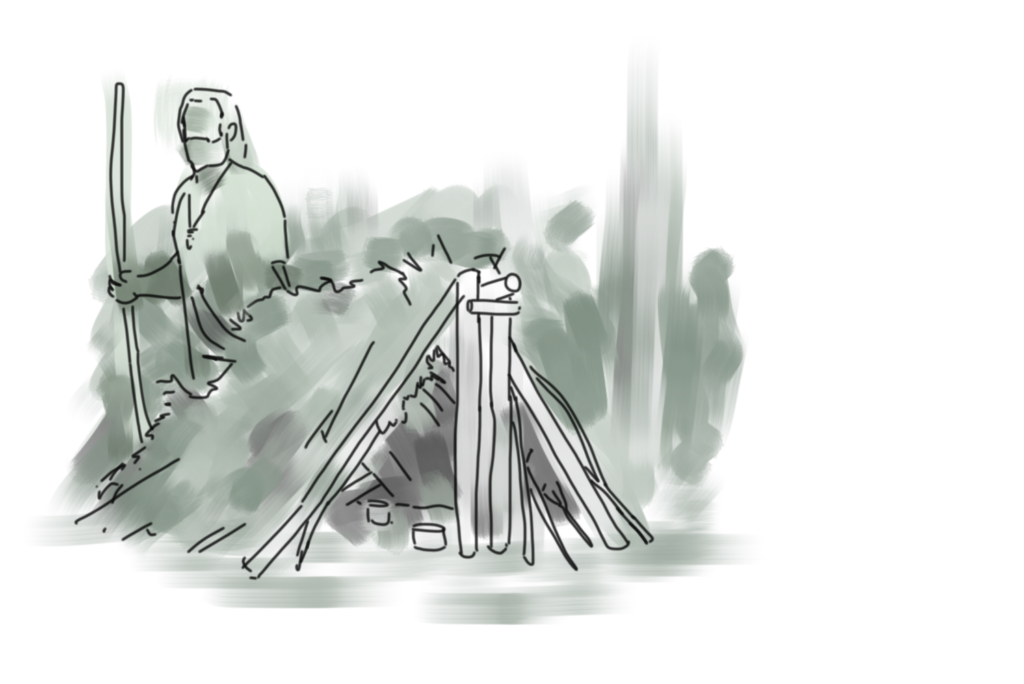If you have not, do it and you will improve your chances of not going extinct.
Over the years, I had the chance to see some of the concepts described in these books applied in real-life situations. Some of these applications were successful and rigorous and confirmed my admiration for the amount of impact compacted in such simple concepts.
However, more often than not, I have seen the concepts, approaches, and terminology he formulated deformed, mutilated and distorted into grotesque parodies – both intentionally and unintentionally.
So, paying Clay Christensen’s work the respect it deserves, I wanted to share my survival guide instructions to this work: impressions, recommendations, and thoughts on how business leaders can use his ideas to drive success, growth and transformation.
Today, you will learn to survive the Jungle of “Jobs To Be Done” (aka Competing Against Luck).
1. Understand the area.
The heart of “Competing Against Luck” is that buyers do not seek your products: they rent them to get a job done.
A classic aphorism that illustrates this idea is “People don’t want to buy a quarter-inch drill. They want a quarter-inch hole.”
In the book, the author posits that most buyers are not buying what you think you are selling – thus you must take a step back and understand your buyer at a deeper level than you do.
To do so, common market research and segmentation techniques are the wrong gear: they look intimidating, providing lots of statistically significant quantitative data points but they fail to go more than skin deep and reach vital organs of the buyer. Instead, you rely on deep, soul searching exploration.
So, before anything, understand that this is the journey you are about to embark on. If you suspect that results will face skepticism (especially if results are counter-intuitive), you need to pack for that. Sometimes this means complementing it with quantitative research but, more often than not, the truly valuable insights are not suited for that and you might need to venture into experimentation and pilot programs.
2. Agree on what is an useful insight
One thing the book and practitioners often forget to mention is that buyers also do not want quarter-inch holes. They want to see a picture of their grandchildren on the wall.
Explorers venture into uncharted territory. It helps to have an idea of how you will recognize an insight when you see it.
I have seen reports which, after this exploration, described only obvious, superficial buyer motivations – which provided very little additional value. And I have also seen reports that described ideas which sounded deep and could be right but had very little practical use.
3. Know thyself and avoid mirages
Maybe the most dangerous trap from the fact that this relies on free exploration is that it is very easy to get lost in our own biases.
A consulting firm hired by a company I know found a very interesting need for products associated with social causes – an area the company had a clear advantage and was aligned with their mission and values.
However, after some digging, it became obvious that the opportunity was a mirage: it looked like it was there only because the client “desperately needed it”. Some clients were indeed socially conscious but to a critical eye it was clear that this had very little to do with the purchasing process.
4. Think 2 steps ahead.
Often the work to uncover JTBD is a dead end.
Sometimes it is because the insights are not worth it. But more often than not, it is because the business leader launched the expedition in the hopes of finding THE insight that will spark ideas of what to do next.
Some research firms will have suggestions of what to do next. However, more often than not, they will jump from conclusions to planning and execution. To them, if there is an opportunity, the only question to be answered next is what do I need to do to capture it and start doing it.
If this is your trail: take it.
But consider that, instead, results can be funneled towards your strategic thinking: towards answering questions like: what are the implications of these insights to my business? Where does it sit within your future sources of growth? What version of the future should I march towards? How can these insights enhance my chances of surviving and thriving in this future?
A client of mine found that buyers felt intimidated by the products available in the market. That was obviously not because the companies providing them wanted to make scary products. It was because after years and years of experimentation, no one (nor incumbent nor attackers) had cracked the code of how to make the product simple and non-menacing.
Embracing this insight meant publicly stating that they were committed to solving that – and that is a very scary thing to do. But, if you do not do it, there is very little to be gained in this expedition.
5. Find the heart of darkness.
Unfortunately, the vast majority of people I have seen applying this framework reach conclusions which sound written by a PR.
All motives sound like this: People buy your working capital loan so they can increase production and capture new, bigger commercial opportunities.
Aargh!
We all know that people also do things for less PR-worthy reasons. They use a banking service because they are lazy. They buy group benefits to keep up with the Joneses in their sector. They get insurance to feel less guilty when neglecting their families.
These are not necessarily evil – some of them may be embarrassing, some may hurt your pride and some are just silly.
So, when you get a list of buyer insights, ask yourself: are there at least one or two “reasons” that people would feel uncomfortable voicing out? If there are none, is it possible that researchers were too eager to believe in socially acceptable explanations to avoid pressing further?


